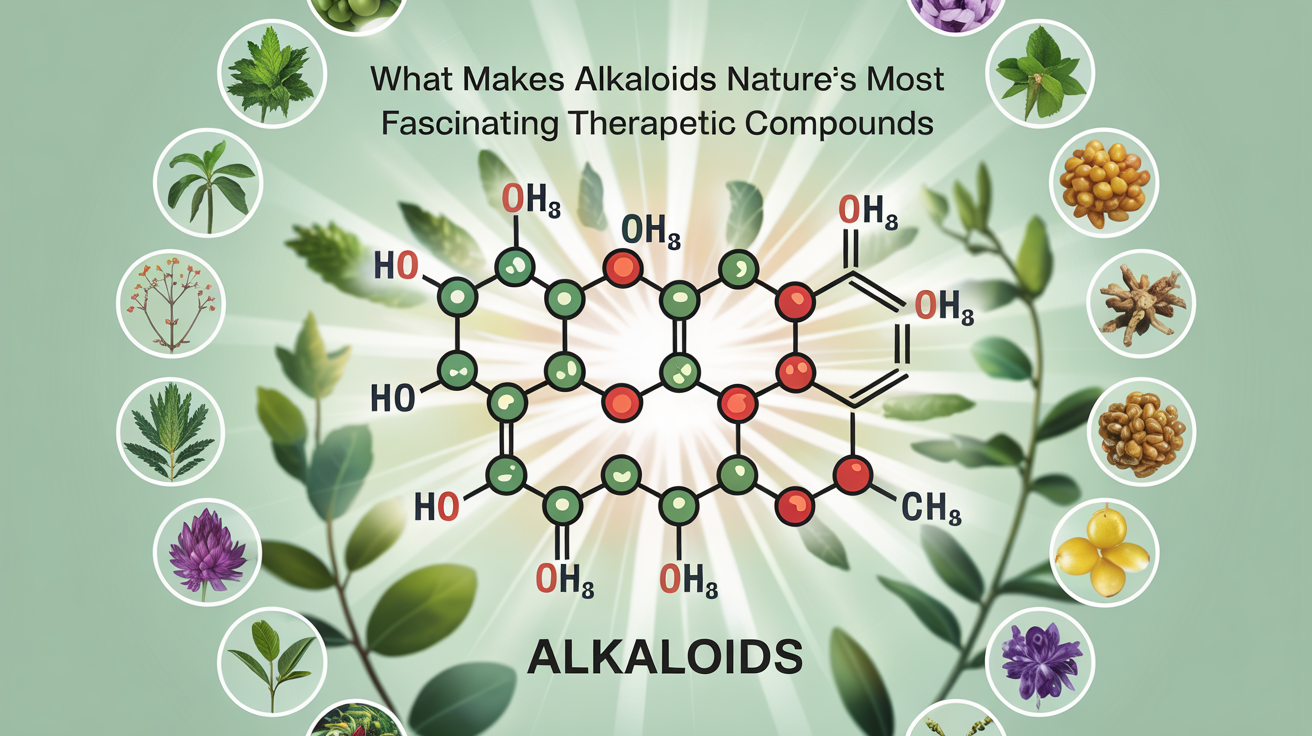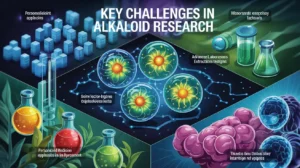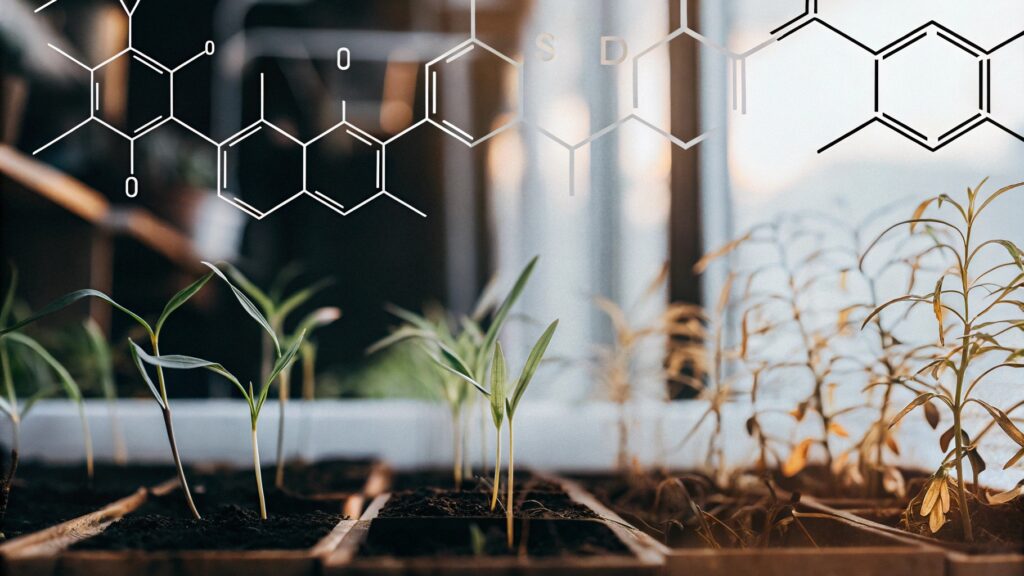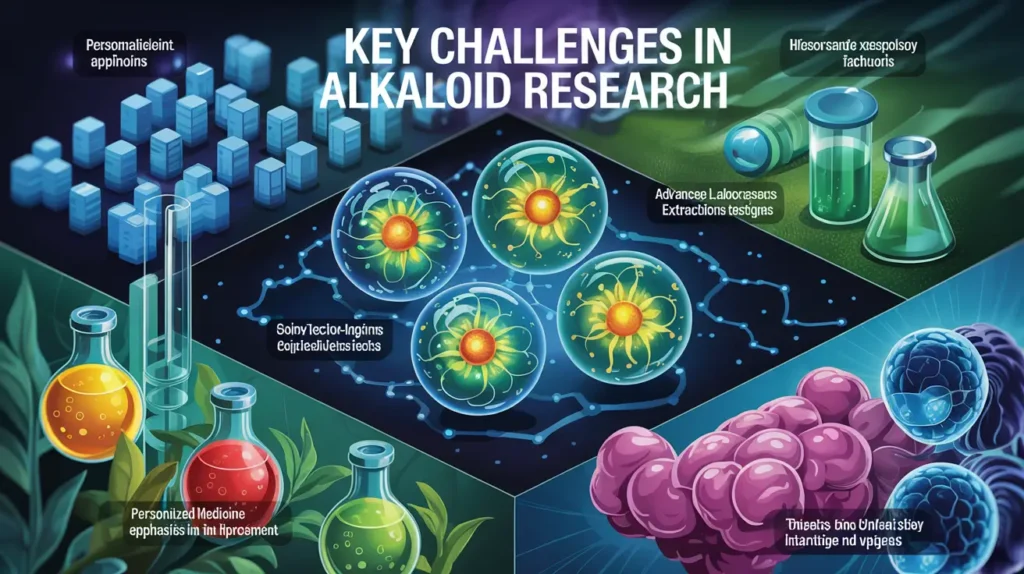





The pharmaceutical world faces a significant challenge: finding potent, natural therapeutic agents with reduced toxicity. Alkaloids, with their complex structures and remarkable bioactivities, offer promising solutions.
Alkaloids are nitrogen-containing compounds naturally produced by plants and some animals, serving as powerful medicines with diverse applications from pain management to cancer treatment. Their unique chemical structures enable highly specific interactions with biological targets, making them invaluable therapeutic agents with generally lower toxicity than synthetic alternatives.

Transitioning from traditional medicine to modern pharmaceutical science, alkaloids have consistently proven their worth. Their remarkable chemical diversity and potent biological activities have captivated researchers for centuries, and recent advances are now unlocking even greater potential through synthetic biology and advanced analytical techniques.
Plants don’t have medical degrees, yet they somehow create incredibly complex therapeutic molecules. The biochemical machinery behind alkaloid production represents some of nature’s most sophisticated chemistry.
Plant alkaloid diversity relies on intricate enzymatic pathways that produce unique molecular backbones conferring specific pharmaceutical properties. These biosynthetic routes involve specialized enzyme families like methyltransferases, cytochrome P450s, and oxidoreductases that perform precise chemical modifications to create thousands of different alkaloid structures.

Dive deeper into the biosynthetic mechanisms reveals fascinating evolutionary adaptations. Benzylisoquinoline alkaloids (BIAs) represent one of the most prominent classes of plant metabolites with significant pharmaceutical importance, attracting researchers worldwide. They exhibit numerous pharmacological activities, including analgesics like morphine and tetrahydropalmatine, antimicrobial agents such as berberine, and antineoplastic compounds like cepharanthine.5
A well-defined biosynthetic pathway and the identification of key enzymes in these pathways form the foundation for BIA biosynthesis. Recent comprehensive and systematic bibliometric analyses of BIA biosynthetic pathways have helped elucidate these key enzymes and bridge knowledge gaps in existing research.5
The complexity of these pathways is extraordinary. For example, berberine biosynthesis starts with tyrosine as a precursor, which undergoes multiple enzymatic reactions to form derivatives including dopamine and 4-hydroxyphenylacetaldehyde. These derivatives then react under the influence of norcoclaurine synthase (NCS) to form norcoclaurine, which undergoes several further transformations involving enzymes like norcoclaurine 6-O-methyltransferase (6OMT), coclaurine N-methyltransferase (CNMT), and cytochrome P450 oxidoreductase (NMCH), eventually producing important intermediates like (S)-reticuline.5
Reticuline serves as a crucial intermediate and node in the biosynthetic pathways of various alkaloid types. While the upstream biosynthetic pathways and key enzymes are relatively well understood, downstream pathways for specific compounds remain less clear. Additionally, the catalytic efficiency of particular enzymes can vary significantly between different plant sources, highlighting the importance of analyzing downstream biosynthetic pathways and identifying pivotal enzymes for optimal biosynthesis.5
In an era of sophisticated drug design technologies, nature’s alkaloids still stand out as exceptional therapeutic agents. Their remarkable potency and selectivity continue to make them indispensable in modern medicine.
Alkaloids exhibit at least ten diverse medicinal properties including antioxidant, anti-inflammatory, anticancer, antimicrobial, and neurological effects. Their effectiveness is often enhanced when combined with other phytochemicals, creating synergistic multi-compound therapeutic formulations that can address complex conditions where single-target drugs may fail.

Dive deeper into the therapeutic applications reveals how alkaloids work at the molecular level. As global interest shifts toward natural therapeutic agents due to their lower toxicity compared to synthetic compounds, researchers are taking novel approaches to examine the ecological and molecular factors influencing alkaloids’ medicinal properties. Comparative analyses of alkaloid potency across various plant species explore how environmental factors, including soil composition and climate, impact alkaloid concentration and efficacy. Additionally, research highlights the synergistic potential of alkaloids when combined with other phytochemicals, offering new insights into more potent, multi-compound therapeutic formulations.4
Research documents ten key medicinal properties of alkaloids, including antioxidant, anti-inflammatory, and anticancer effects, and examines the molecular pathways through which these benefits occur. By exploring alkaloids from under-researched plant species, scientists aim to expand medicinal applications, particularly within personalized medicine, where alkaloid efficacy may vary based on genetic and pathological factors. This novel perspective emphasizes the need for further research to optimize alkaloid extraction methods and assess their potential in personalized and combination therapies, ultimately creating more effective natural treatments.4
Recent discoveries continue to expand our understanding of alkaloids’ therapeutic potential. For instance, a new pyrrolopyrazine alkaloid named lycipyrazine A, along with seven known alkaloids, was isolated from Lycium chinense (Chinese wolfberry) fruit. The structure of this new compound was determined through extensive spectroscopic analyses. When tested for α-glucosidase inhibitory activity (important for diabetes management), one of the compounds (compound 4) showed strong inhibitory activity with an IC50 value of 3.04 ± 0.38 μM. Such findings enrich our understanding of alkaloid structural diversity while providing valuable leads for new antidiabetic agents from natural sources.9
Traditional extraction of alkaloids from plants faces significant challenges: low yields, environmental impact, and supply limitations. Biotechnology offers elegant solutions to these age-old problems.
Biotechnology approaches are transforming alkaloid production through heterologous expression systems in bacteria, yeast, and engineered plants. These systems can produce complex alkaloids like morphine, berberine, and noscapine from simple precursors through reconstructed biosynthetic pathways, overcoming limitations of traditional plant extraction while enabling sustainable large-scale production.

Dive deeper into biotechnological production methods shows dramatic advances in recent years. Most BIAs are extracted from medicinal plants and exhibit wide-ranging pharmacological activities. However, with the exception of some alkaloids like berberine from Coptis coptis and tetrahydropalmatine from Stephania intermedia, the content of most BIAs in medicinal plants is relatively low, prompting researchers to explore biosynthetic approaches.5
For example, researchers introduced seven BIA biosynthesis-related genes from different plants into Saccharomyces cerevisiae (baker’s yeast) and achieved berberine biosynthesis through enzyme-mutation screening, gene copy number optimization, intermediate addition, and culture condition optimization. This work has even led to successful biosynthesis of opioid alkaloids like thebaine and hydrocodone.5
Different host organisms offer unique advantages: Escherichia coli (E. coli) has a well-established genetic background with diverse suitable strains and vectors. It has been successfully used to express numerous eukaryotic genes at high levels. Additionally, E. coli is simple to operate and culture, cost-effective, and has lower operational requirements, making it advantageous for biosynthetic applications.5
The yeast system has also been extensively used for heterologous reconstruction of secondary biosynthetic pathways of plant metabolites. Yeast systems have well-defined metabolites and genetic backgrounds. Moreover, compared to bacterial systems, yeast provides a microenvironment more similar to plant metabolism, enabling the post-translational processing and modification of proteins that facilitate the expression of plant-derived membrane proteins.5
Recent advances in technology have increased the feasibility of using microorganisms to biosynthesize complex secondary plant metabolites with high value. Heterologous biosynthesis platforms demonstrate the possibility of achieving high yields and supporting the expression of numerous heterologous enzymes involved in complex biosynthetic pathways. The integration of genomics, bioinformatics, and synthetic biology has significantly facilitated the discovery of secondary plant metabolites and their potential biosynthetic routes.5
Despite remarkable progress, significant obstacles still stand in the way of fully utilizing alkaloids’ therapeutic potential. These challenges require multidisciplinary approaches.
Key challenges in alkaloid research include incomplete understanding of biosynthetic pathways, low enzyme expression in heterologous hosts, optimization difficulties with engineered strains, and the need for improved extraction methods. Additionally, researchers must develop better approaches for personalized medicine applications considering genetic variations that affect alkaloid efficacy.

Dive deeper into these challenges reveals the complexity of the problems and potential solutions. BIAs are crucial for advancing medical and societal domains, but their availability is often limited by plant resource scarcity. Recent advances in synthetic biology have elucidated biosynthetic pathways and the enzymes involved in producing several alkaloids. Heterologous reconstruction of BIA biosynthetic pathways in bacteria and yeast enables cost-effective production of complex active ingredients or drugs using inexpensive starting materials.5
Nevertheless, BIA biosynthesis faces several challenges. First, most biosynthetic pathways for BIAs, particularly those with complex structures, remain poorly understood, creating difficulties in identifying and transforming highly efficient synthases within these metabolic routes. Second, while various enzymes involved in BIA biosynthetic pathways have been successfully expressed in heterologous hosts (including membrane-binding proteins), current production levels cannot meet high industrial requirements due to factors such as low enzyme expression and difficulties optimizing metabolism in engineered strains.5
Therefore, further developments in synthetic biology are warranted to discover innovative solutions—particularly through cross-disciplinary integration with multiomics technologies—to enable large-scale biosynthesis of trace natural products.5
In the realm of personalized medicine, alkaloid efficacy may vary based on genetic and pathological factors. This perspective emphasizes the need for further research to optimize alkaloid extraction methods and assess their potential in personalized and combination therapies, ultimately creating more effective natural treatments.4
Alkaloids represent nature’s pharmaceutical masterpieces, with complex structures and powerful therapeutic effects that continue to inspire modern medicine and biotechnology innovations.

Plant-derived compounds containing nitrogen, widely recognized for their pharmacological effects, including pain relief and stimulation.
Get The Latest Updates and Promotion Information.
